21.02.2014Cairns – Exploring Daintree Rainforest
Australia is huge!
After flying 2’000 km along the east coast from Sydney to Cairns in a little over 4 hours we reached the north part of Queensland. The ‘Sunshine State’ is the second-largest and third-most populous state in Australia. Since it is so large the landscapes range from sunny tropical coastal areas, lush rainforests to dry inland areas. We immediately felt the change in climate when we arrived at the airport in Cairns and it took us some time to get used to the hot and humid summer 🙂
Cairns is surrounded by rainforest and was our hub to explore Daintree, the world’s oldest rainforest. Despite the fact that Cairns is located at the ocean, there is no swimming beach in central Cairns. The only beach one finds along Cairns Esplanade is a huge mud flat:
To nevertheless allow people to cool-down in the ocean, a large outdoor lagoon-style pool was designed in the center of the Cairns City area, which seemed quite popular (see this posts title picture).
After comparing different Daintree tours we decided to rent a car and explore the Daintree rainforest independently. On the way north we passed by beautiful spots along the road and one can see how the ever-present green of the lush tropical rainforest creeps down the hills, only separated from the ocean by a narrow strip of sandy beach:
Our first destination was Mossman Gorge. At an age of 135 million years Mossman Gorge contains the oldest, continuously surviving rainforest on earth. With one of the wettest climates in Australia, humidity often exceeds 80 % with temperatures averaging 27-33 degrees Celsius. We immediately noticed the high humidity when our T-shirts stuck to our bodies even before we started-off for the Gorge Circuit walk:
The walk passed beautiful sites with rivers and fauna we had never seen before:
The mean rainfall varies from 1’200 mm/year to more than 4’000 mm/year with some areas within the region receiving up to 9’000 mm/year. The Daintree rainforest receives a higher rainfall than any other place in Australia and is often referred to as the “wet tropics”.
With an age estimate between 110 – 200 million years, Daintree is the oldest intact lowland tropical rainforest in the world. In comparison: The Amazon is about 7 million years old, the Kuranda Range about 60 – 70’000 years.
Just one hectare of the 120’000 hectare forest can contain over 30’000 species of plants and animals. More than 430 bird species have been spotted in the gorge, along with 18 species of reptile and 12 species of amphibian.
We kept cooling down and refreshing in the river along the way:
Another of the wonders were the giant strangler fig trees:
Their huge trunks spread widely towards the ground to give them strong support for their towering growth:
Another cool-down in the river…
with the fish 🙂
One can even see the humidity in the glistening moss of the trees:
We continued on towards Cape Tribulation and stopped at a lookout:
Sandwich lunch in Daintree village:
To learn more about the rainforest the Daintree Discovery Center is probably the best place to go. It is an award-winning interpretive facility that allows visitors to access the forest floor to the upper most reaches of the canopy. On a boardwalk, a 23 meter high Canopy Tower and an Aerial Walkway one gets to roam all height levels of the rainforest while a guide points out the sights along the way.
One of the views from the Canopy Tower: Green wherever one looks.
After spending several hours in the discovery center we headed on to the beaches around the village of Cape Tribulation.
You might be thinking “Doesn’t tribulation mean grievous trouble and suffering?” and “Why would anyone want to go to that place?”.
The place itself is beautiful and owes its name to Captain James Cook sailing up the east coast to claim the land of Australia for the British. During one of the nights his ship the Endeavor hit a coral reef and the crew had to work tirelessly through the night to keep the ship afloat. They managed to free the ship from the reef by morning and for all the woes that had befallen him, Captain Cook looked out to the nearby land and named it Cape Tribulation.
On our way to the beaches of Cape Tribulation we passed warning signs for “crossing cassowaries”, one of Australia’s flightless birds:
And later at the beach several more warning signs and emergency vinegar against jellyfish stings:
The beach was beautiful and extended as far as one could see, but with those warning signs we didn’t dare to get more than our feet wet in the water.
A couple kilometers on, we stopped at another beach and passed through a marsh like passage:
This time the signs warned of crocodiles…
Again a beautiful beach, but no swimming for us 🙁
We spent some time walking along the shore line and enjoyed the ocean breeze:
An interesting piece of beach art built of little sand-balls which were arranged in funny patterns:
At first we did not have any explanation who or what was responsible for these beach artworks, until we spotted this little culprit. Pretty amazing how they dig their little caves and role the excess sand in shape of balls away:
After relaxing some more on the beach and resisting the urge to swim, we got on our way back to Cairns and had a nice drive back home along a beautiful countryside passing by coffee, banana and sugar cane fields.
In the hot and humid climate it did not seem very appealing to us to go for long walks or treks. Instead we enjoyed local eateries, pubs and souvenir shops in Cairns. The few days we spent here were relaxing but we were hoping to find some of those beautiful beaches without any of those fearsome warnings…
This entry was posted in Australia, WorldMapComments
Leave a Reply
You must be logged in to post a comment.
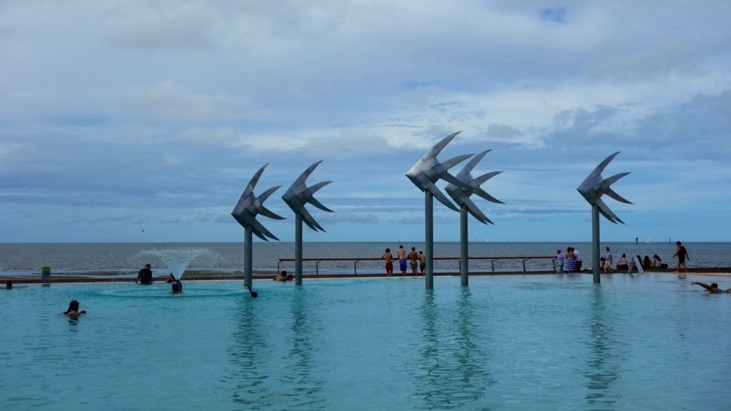
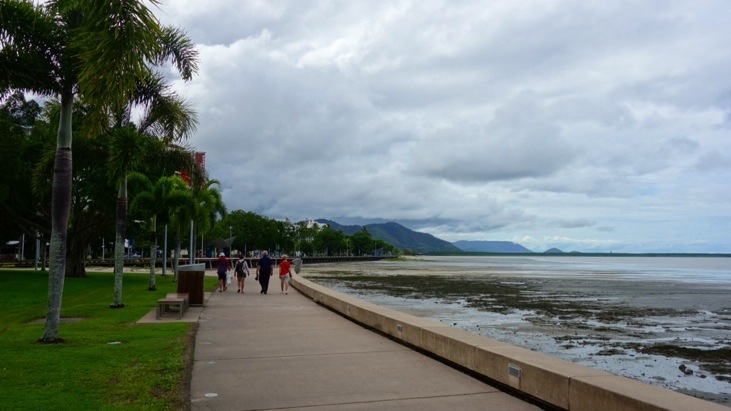
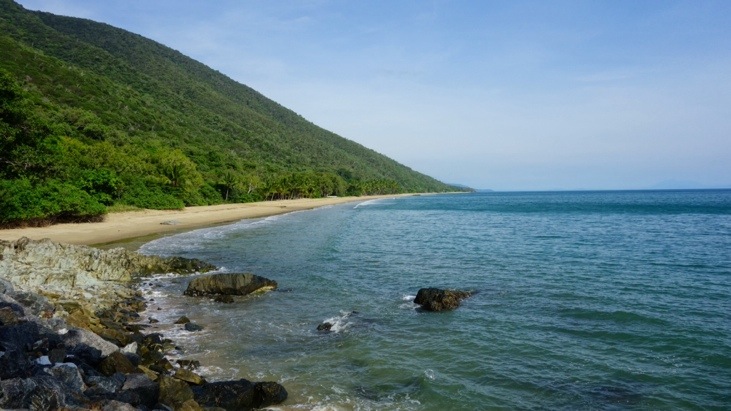
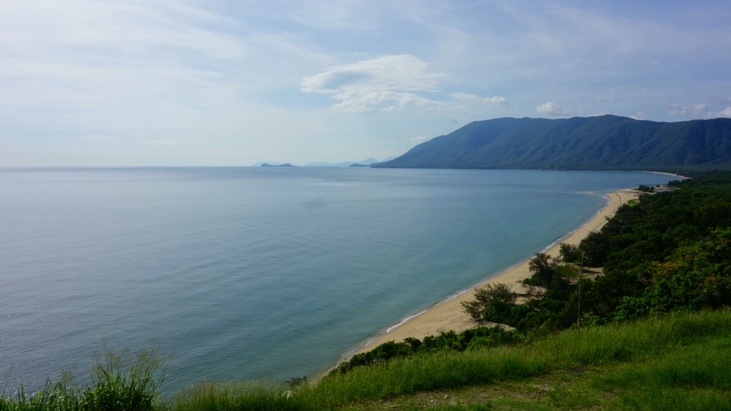
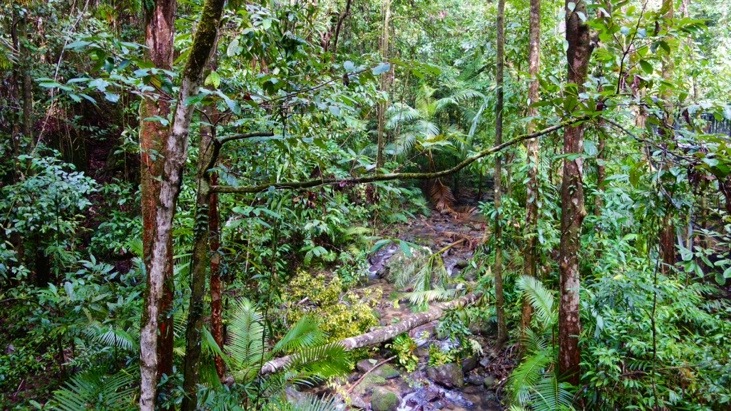

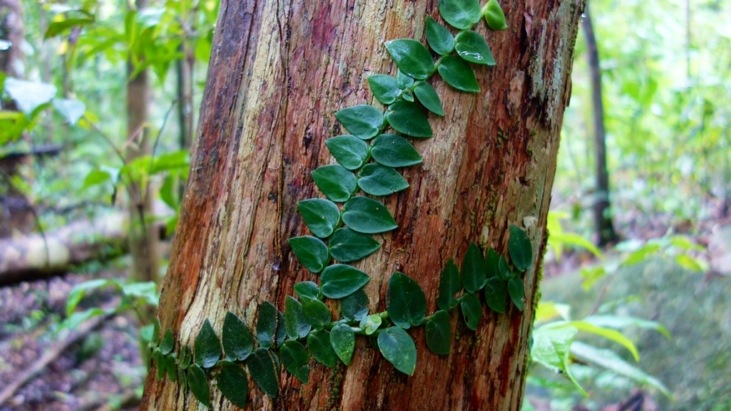
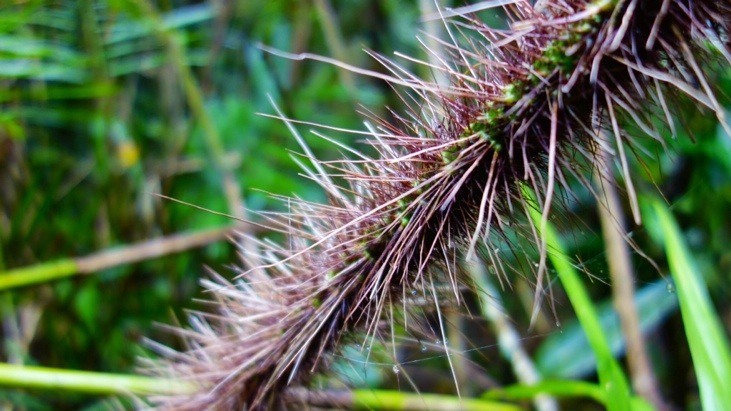
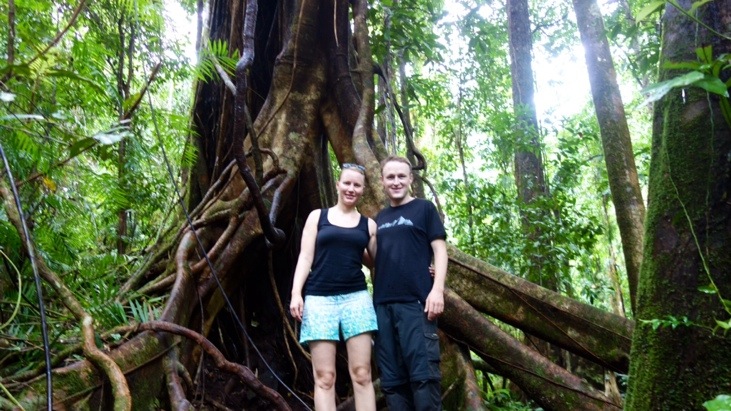
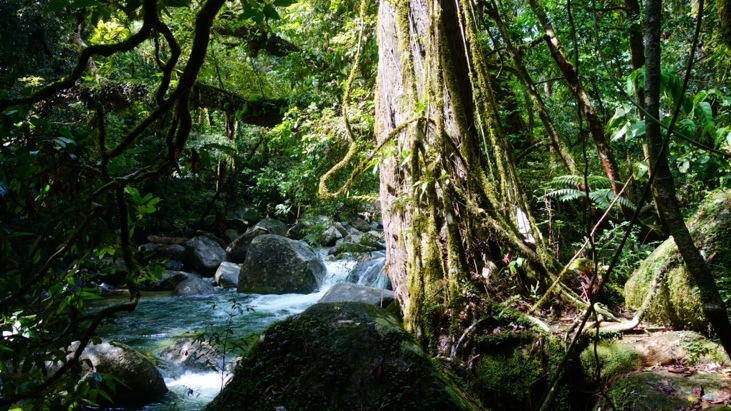
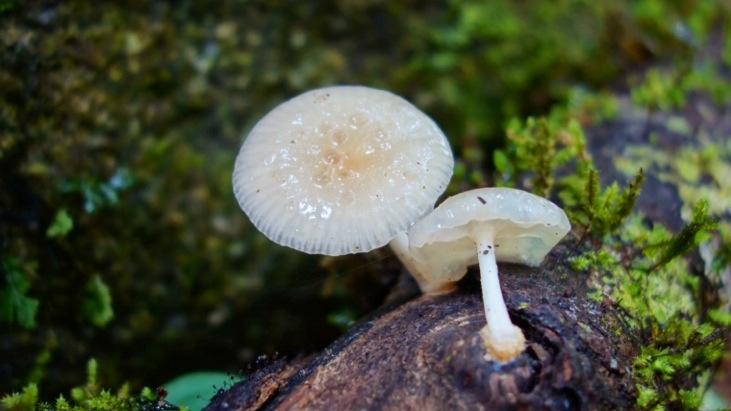
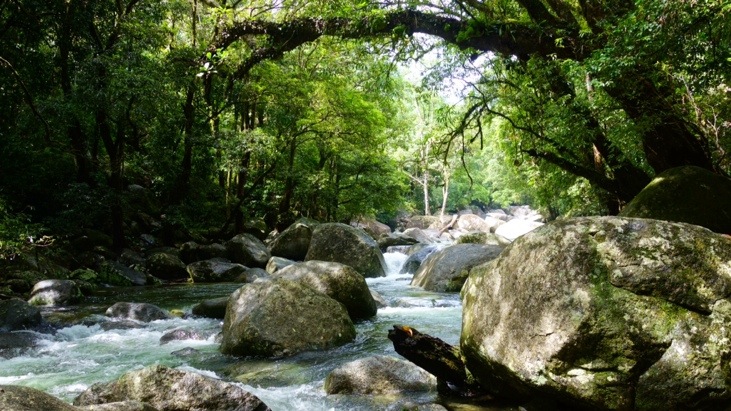
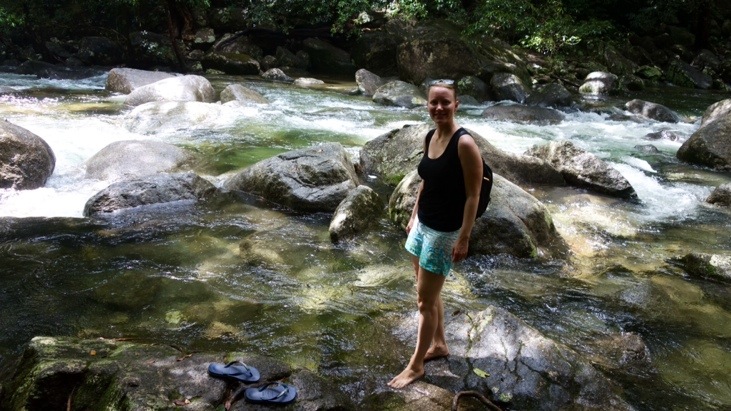
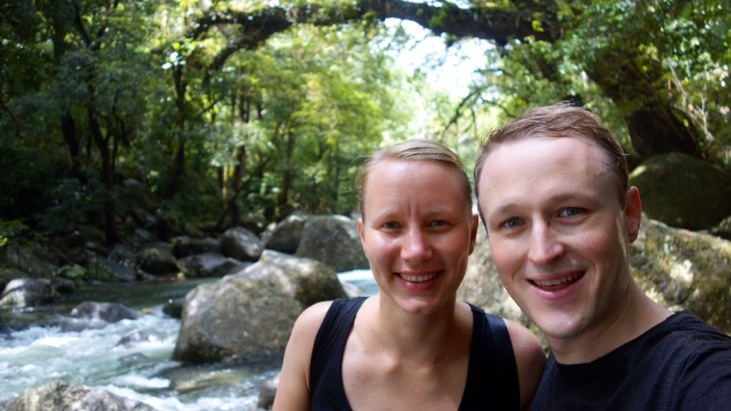
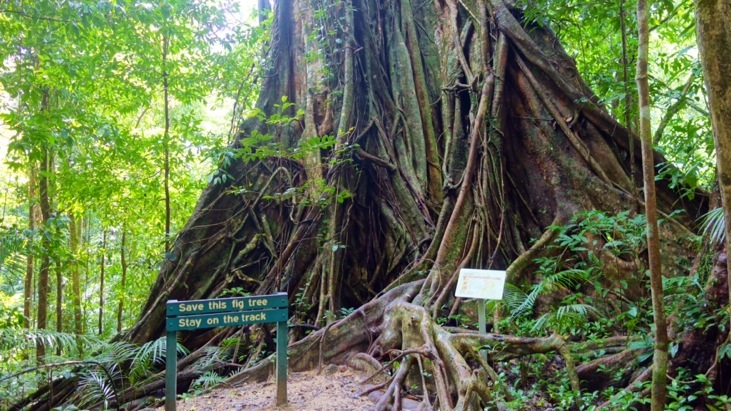

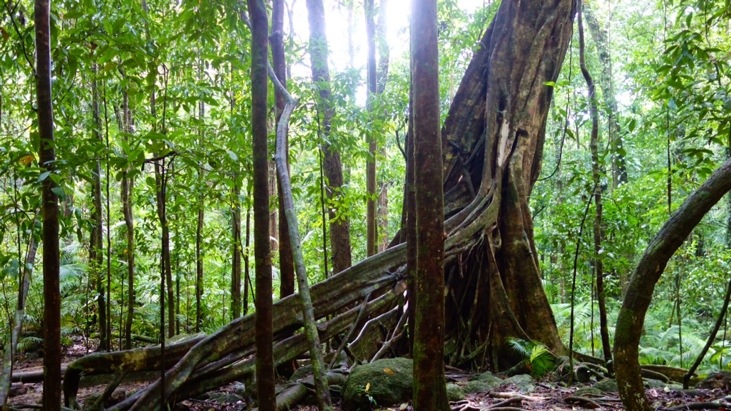
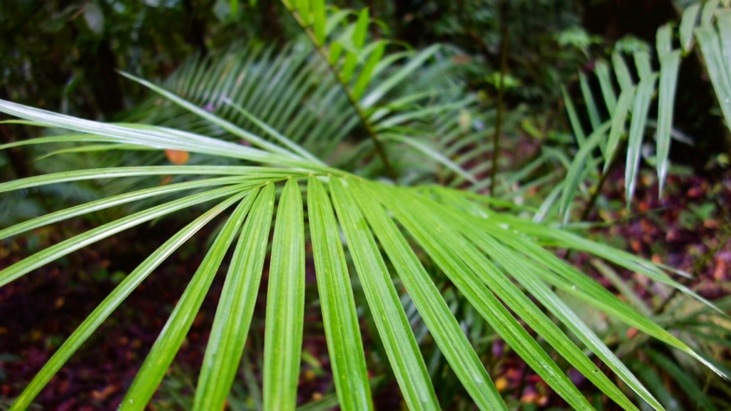
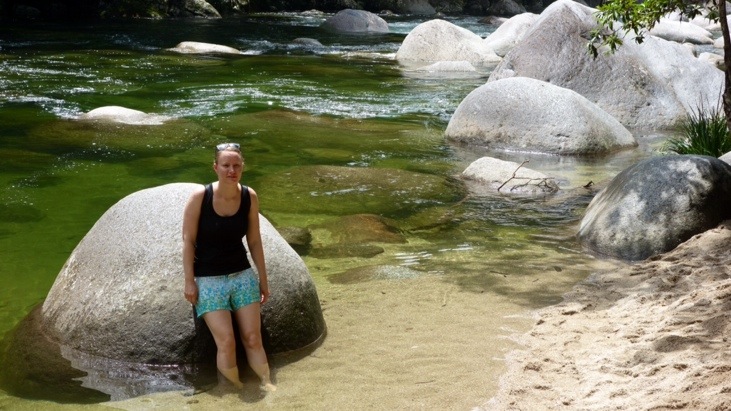
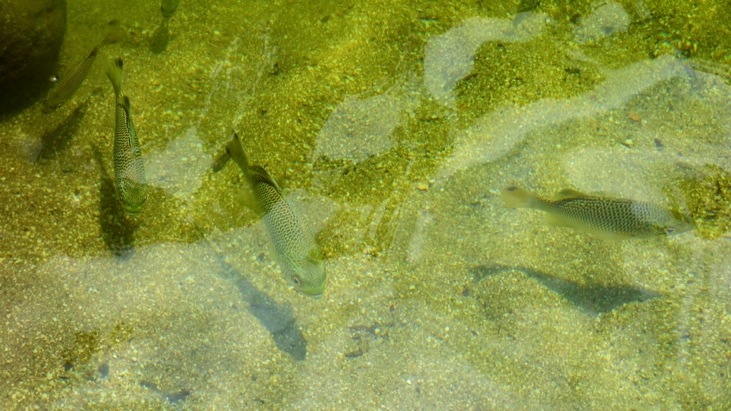
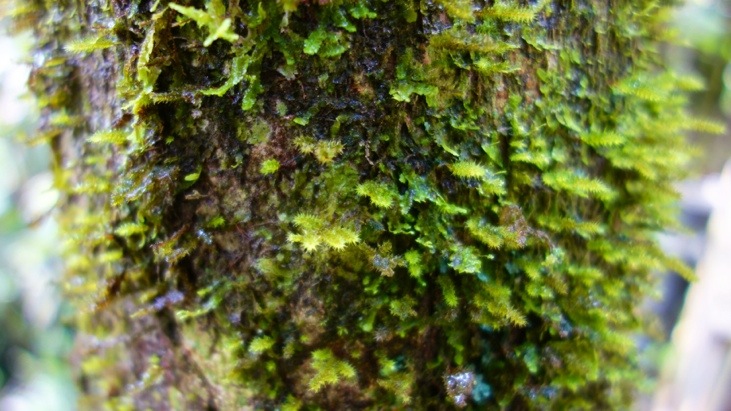
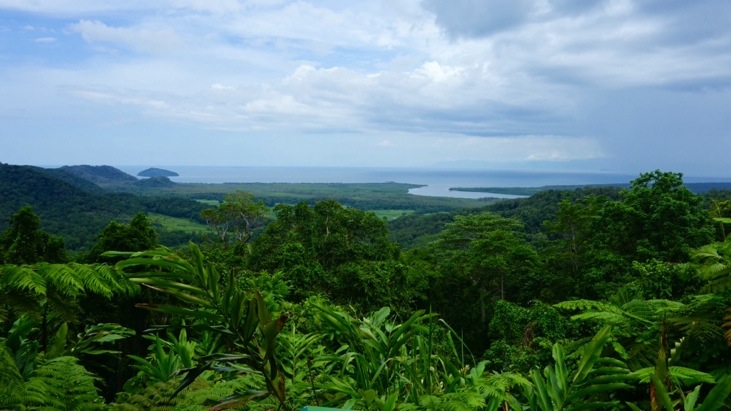
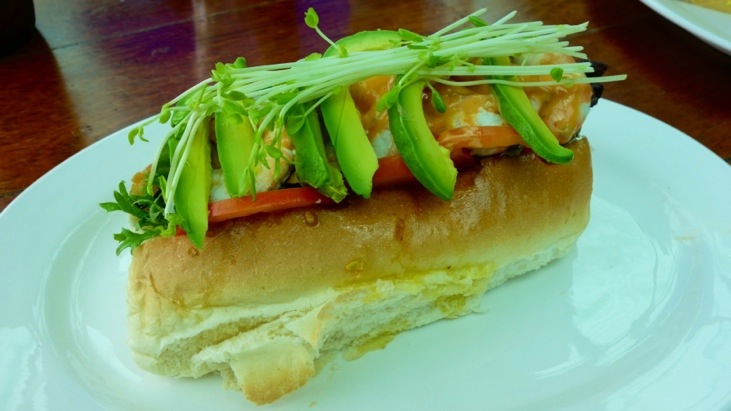
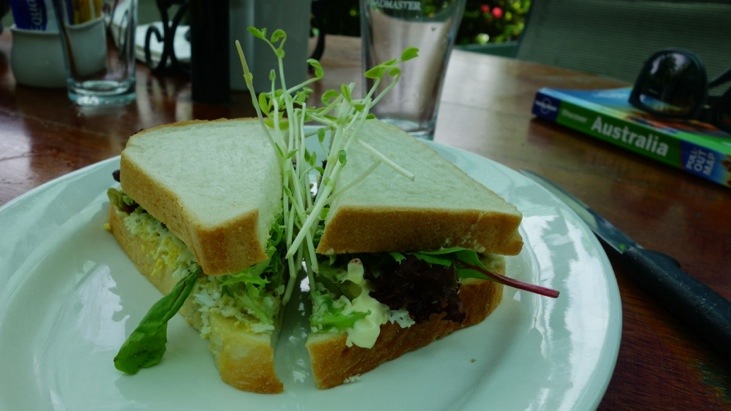
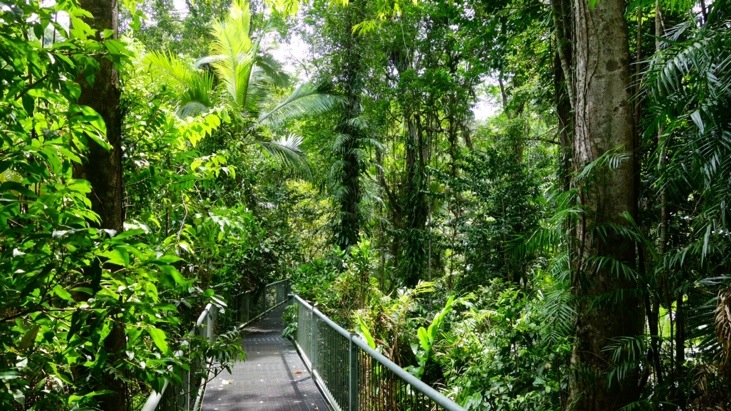
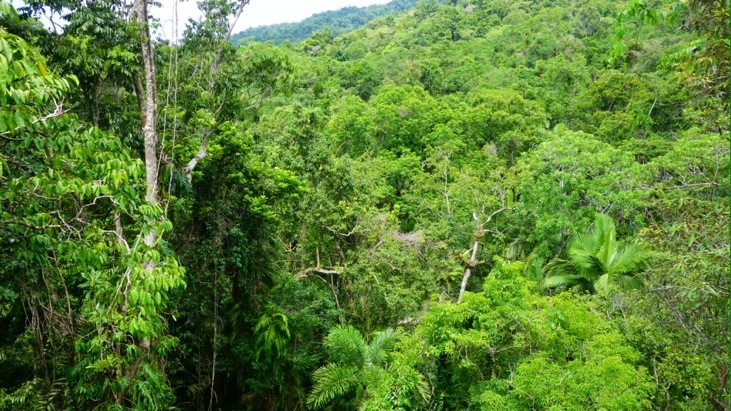
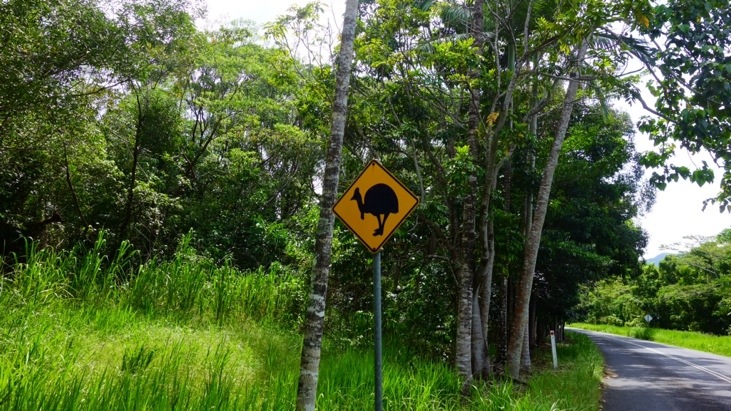
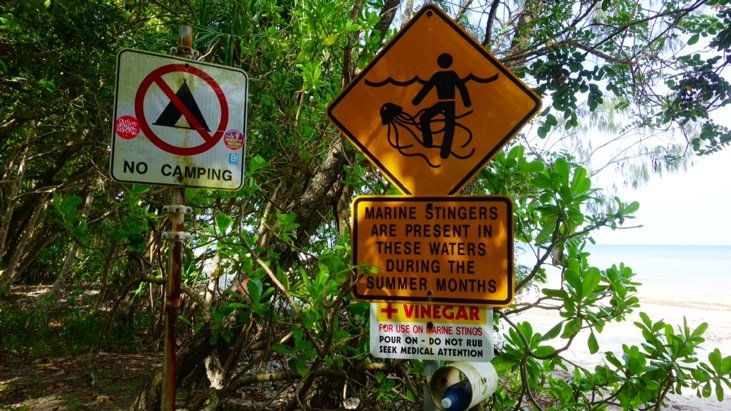
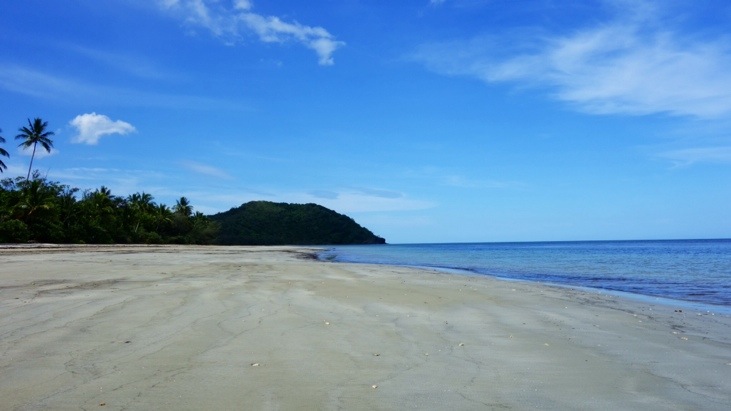

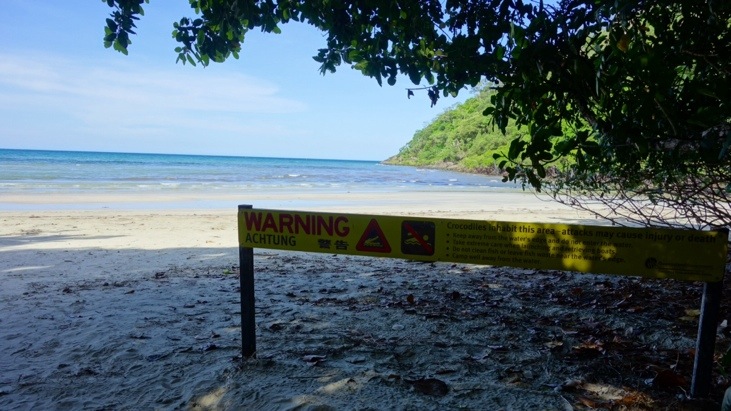
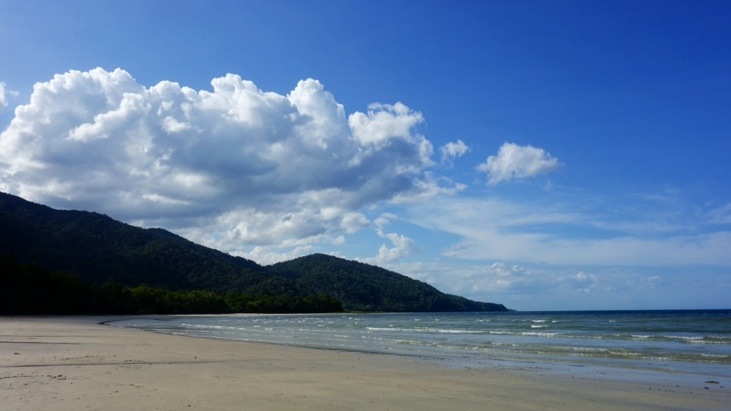
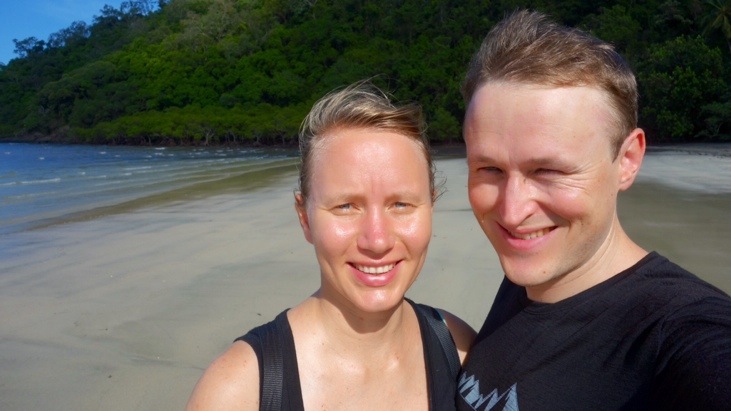
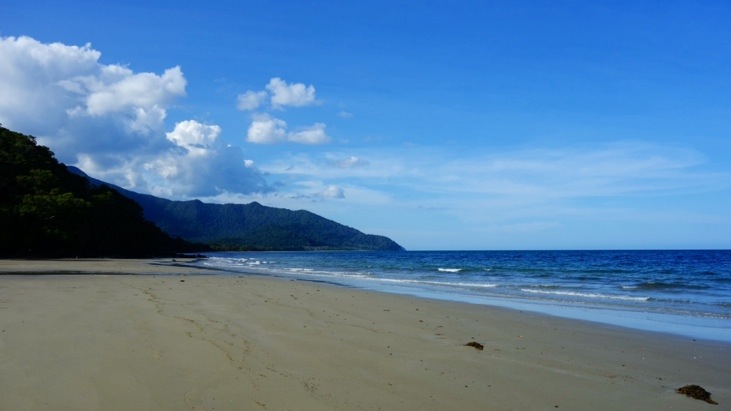
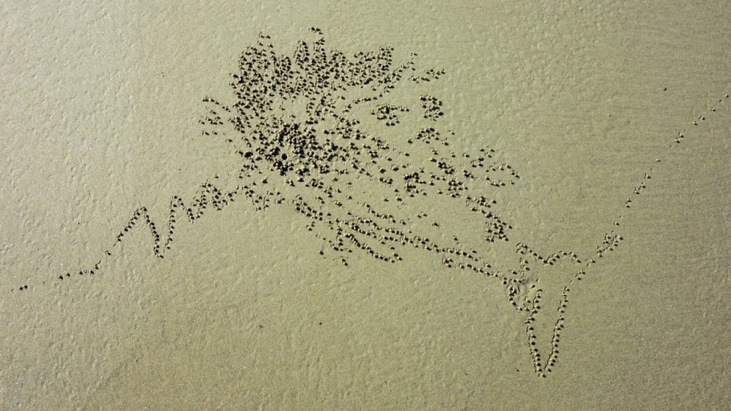
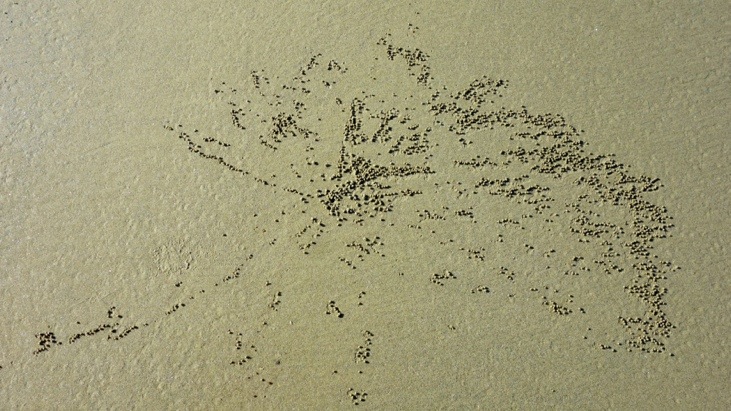
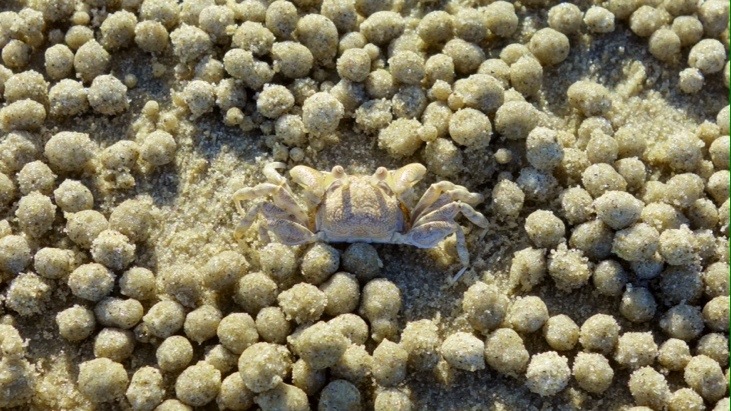
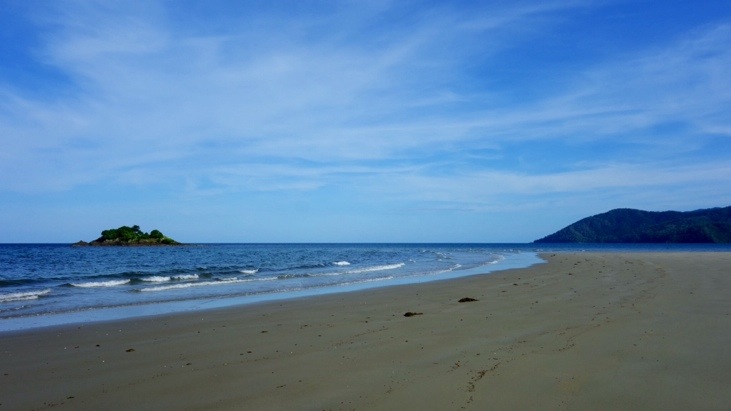
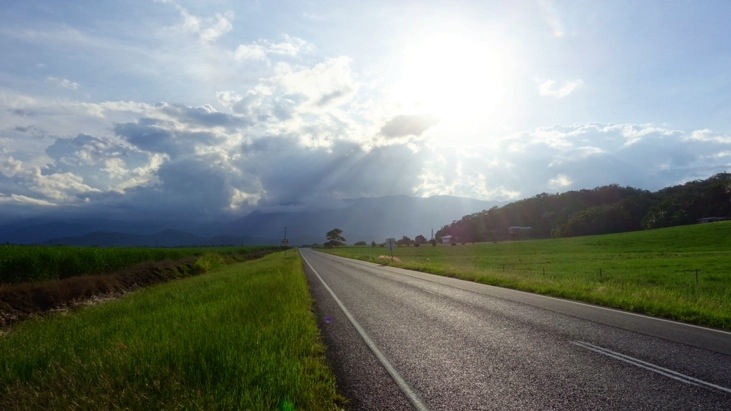
Australia!
Just set a new password and am now able to leave a comment.
Glad you took the warning and stayed out of the crocodile infested waters.
G’day mates!
“Aunt” Judie
The good old “G’day mate”! As a Non-Aussie it seems almost impossible to pronounce correctly…
We’ve heard a lot of: G’day mate! How are you today?
And what it sounds like is this: Gidday my! How are you to die?
We’ve also been told to pronounce it the following way: “Gud-eye mite”, but so far we have not managed to pass as Australians 😉
Locks laik it’s natganna snoi ha? 🙂
Images #35 and #36 – it’s the dot-to-dot-crab … (http://busybeekidsprintables.s3.amazonaws.com/animals/ocean/DottoDot/CrabDTD_1to30.pdf)
And no, you definitely don’t want to “bump into” a http://en.wikipedia.org/wiki/Cassowary (go ahead, and read the “Relationship with humans” section 🙂 )